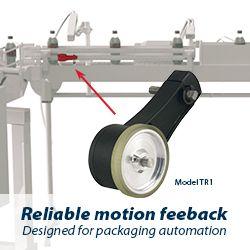New NIOSH Center to Study Safety and Health Implications of Occupational Robots
“Robots working collaboratively with humans present a new workplace risk profile that is not yet well understood,” said NIOSH Director John Howard, M.D.
WASHINGTON - Increasing numbers of robots are entering the 21st century workplace, yet the benefits and potential risks of robots in the workplace arent fully known. To address the knowledge gap related to robotics and worker safety and health, the National Institute for Occupational Safety and Health (NIOSH) announces the launch of the Center for Occupational Robotics Research. The new Center will assess potential benefits and risks of robot workers and develop guidance for safe interactions between human and robot.
"Robots working collaboratively with humans present a new workplace risk profile that is not yet well understood," said NIOSH Director John Howard, M.D. "Not only is this a new field for safety and health professionals, little government guidance or policy exists regarding the safe integration of robots into the workplace. NIOSHs Center for Occupational Robotics Research will provide the scientific leadership needed to ensure human workers are protected."
Robots are not new to the workplace. Advancements in sensing technology, however, have led to the evolution of the conventional industrial robot working in isolation to smarter, collaborative robots that work alongside, move amongst, or are worn by human workers.
NIOSH researchers have identified 61 robot-related workplace deaths between 1992 and 2015. The Center will continue to monitor trends in injuries associated with both traditional and emerging robotics technologies.
"We suspect fatalities will increase over time because of the growing number of industrial robots being used by companies in the U.S., and from the introduction of collaborative and co-existing robots, powered exoskeletons, and autonomous vehicles into the work environment," said Dawn Castillo, M.P.H., director of NIOSHs Division of Safety Research and the Centers program manager. "NIOSH has a history of robotics research and through the Center for Occupational Robotics Research, we are poised to proactively address the safety of todays and tomorrows workers who use, wear, or work near robots."
NIOSH will work in partnership with partners in academia, industry and government to establish risk profiles of robotic workplaces, identify research needs and conduct research to improve the safety, health, and wellbeing of humans working with robots and robotic technologies and support the development and adoption of consensus safety standards. The Centers first formal partnership was established on October 5, 2017—an Alliance with the Occupational Safety and Health Administration and the Robotics Industry Association.
Visit the NIOSH website for more information on robotics and the Center for Occupational Robotics Research.
NIOSH is the federal institute that conducts research and makes recommendations for preventing work-related injuries and illnesses. More information about NIOSH can be found at www.cdc.gov/niosh.
Featured Product

